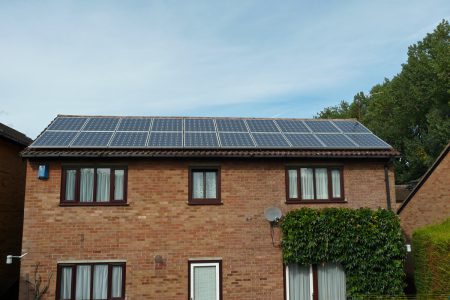The suburbs have had it rough in the last few years. The 2008-2009 economic collapse led to waves of foreclosures in suburbia, as home prices plummeted. More recently, census data suggest that Americans are actually shifting back closer to city centers, often giving up on the dream of a big home in suburbs (much less the far-flung “exurbs”).
It doesn’t help that suburbia has long been the poster child for unsustainable living. You have to drive farther to work, so you use a lot of gas. Meanwhile, while having a bigger home may be a plus, that home is also costlier to heat and cool. It all adds up — not just in electricity bills, but in overall greenhouse gas emissions. That’s why suburbanites, in general, tend to have bigger carbon footprints than city dwellers.
You can see as much in the amazing map from researchers at the University of California, Berkeley, showing how carbon footprints go up sharply along the east coast as you move away from city centers.
But now, a new National Bureau of Economic Research working paper by Magali A. Delmas and two colleagues from the UCLA Institute of the Environment and Sustainability suggests that recent technologies may help to eradicate this suburban energy use problem. The paper contemplates the possibility that suburbanites — including politically conservative ones — may increasingly become “accidental environmentalists,” simply because of the growing consumer appeal of two green products that are even greener together: electric vehicles and solar panels.
“There’s kind of hope for the suburbs, basically,” says Delmas — even though suburbia “has always been described as the worst model for footprint per capita, but also the attitude towards the environment.”
Here’s why that could someday change. Installing solar panels on the roof of your suburban home means that you’re generating your own electricity — and paying a lot less (or maybe nothing at all) to a utility company as a result. At the same time, if you are able to someday generate enough energy from solar and that energy is also used to power your electric car, well then you might also be able to knock out your gasoline bill. The car would, in effect, run “on sunshine,” as GreenTechMedia puts it.
A trend of bundling together solar and “EVs,” as they’re called, is already apparent in California. And if it continues, notes the paper, then the “suburban carbon curve would bend such that the differential in carbon production between city center residents and suburban residents would shrink.”
The reason is that, especially as technologies continue to improve, the solar-EV combo may just be too good for suburbanites to pass up — no matter their political ideology. Strikingly, the new paper estimates that for a household that buys an electric vehicle and also owns a solar panel system generating enough power for both the home and the electric car, the monthly cost might be just $89 per month — compared with $255 per month for a household driving a regular car without any solar panels.
This dramatic savings becomes possible to contemplate, notes the study, due to the growing prevalence of $0 down payment options both for installing solar panels, and for buying electric vehicles.
So are we really on the verge of a widespread phenomenon of green “bundling” — suburbanites installing rooftop solar, and then using it to power both their homes and also their cars? The paper points to four separate trends that are, at least, suggestive.
Read more: Washington Post

